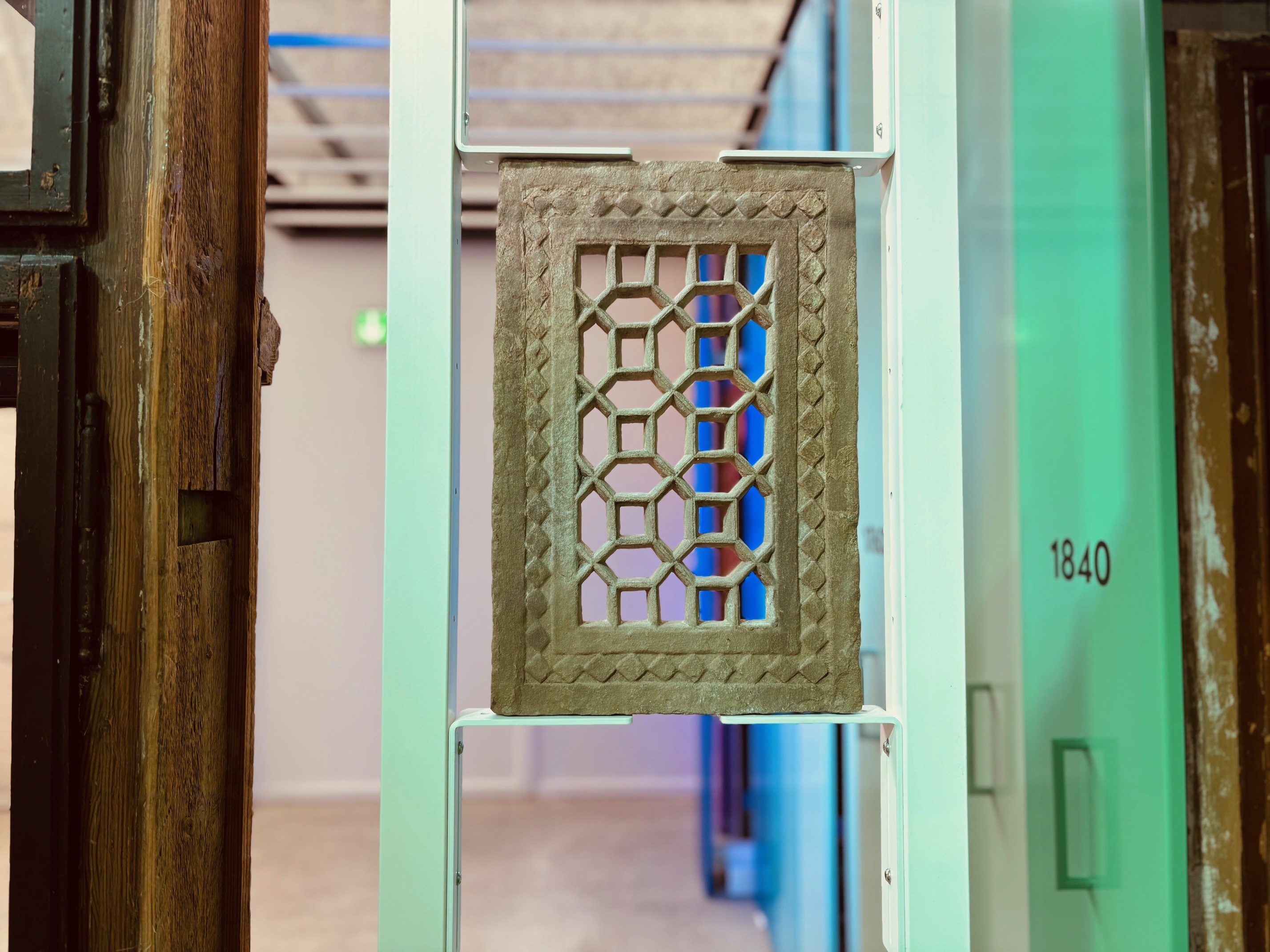From September 2025, visitors can experience a new and unique window at the VILLUM Window Collection, as the museum has acquired an original jali from India.
A jali—which means “net” in Hindi—is a perforated stone or lattice screen, often carved in sandstone, marble, or other natural materials.
The patterns range from strict geometric shapes to calligraphic ornaments. As light passes through the openings, a special play of light and shadow emerges, making the jali both a functional and aesthetic architectural element.
The newly acquired jali at the VILLUM Window Collection originates from India and dates back to the mid-19th century. It is made of sandstone and features a simple symmetrical pattern that lets in light while preventing direct views and shielding from harsh sunlight.
A natural climate solution
Beyond its decorative value, the jali has for centuries served as a natural climate solution. The small openings allow air to circulate and light to filter through, while at the same time reducing solar heat and protecting against rain.
In this way, the jali contributes to a cool, ventilated indoor climate—a function that continues to inspire modern architecture, where the demand for passive climate regulation is on the rise.
With the acquisition of this jali, the VILLUM Window Collection adds an important chapter to the story of the cultural history and development of the window—across time and across the world.
We look forward to presenting the new Indian jali to our visitors from September 2025 as part of our collection.
For further information, please contact museum director Dorthe Bech-Nielsen at +45 2361 4260 or dbn@vkr-holding.com.

